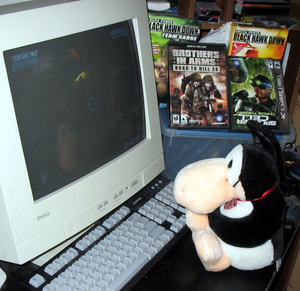Do you have an old fashioned toaster that you refuse to get rid of? Is it starting to malfunction? If so, I have a few suggestions that may help. Over the years, I have managed to prolong the life of a few old fashioned toasters using a handful of techniques. Here they are:
Supplies Needed
In order to troubleshoot and repair an old toaster, you’ll need a continuity tester, screwdrivers, an emery board, an old toothbrush, and powdered graphite. You’ll also need a pair of needle-nose pliers and a lint-free cloth. You can typically purchase most of those items at a hardware or home improvement store.
Remove the Toaster’s Shell
Start the troubleshooting and repair process by unplugging the toaster and removing the knobs. Next, remove the toaster’s end plates and decorative shell. You’ll typically need to remove a few screws to accomplish that task. At this point, I’d suggest that you take a moment to clean the toaster’s end plates, shells and crumb pans too.
Check the Electrical Circuitry
Continue the troubleshooting and repair process by examining the toaster’s power cord, power cord leads and switch terminals. They should be clean, in one piece, and securely attached to the toaster. If they are not clean, go ahead and clean them with an old toothbrush, a lint-free cloth, and an emery board. You’ll also want to use a continuity tester to check the toaster’s electrical connections. Any damaged items should be replaced with identical parts. In addition, any loose wires or cords should be tightened. Afterward, reassemble the toaster and see if completing those tasks made a difference. If they didn’t, take the toaster back apart again.
Check the Bread Carriages
Once you have the toaster disassembled, keep going by turning your attention toward its levers and bread carriages. Begin by pressing the toaster’s lift levers until the bread carriages are locked in place. Then examine the area to see if the bread carriages are properly aligned. If they aren’t, you’ll need to bring them back into alignment. Oftentimes, the best way to do that is to carefully manipulate the bread carriages with a pair of needle-nose pliers. If your model toaster has them, you’ll also want to examine the bread carriage’s locks, latches, solenoid switches, and lift springs. They should all be aligned and free from debris.
Lubricate the Moving Parts
Once that’s done, proceed by lubricating the toaster’s working parts with powdered graphite. In my experience, doing so tends to help them move more freely during use. Afterward, your toaster should be ready for reassembly and another test run. If the toaster still doesn’t work, you may want to consider taking it to a professional repair person.
Source: Personal Experience
More from this contributor:
Top 5 Brands of Counter-top Convection Ovens
Create a No-Sew Bread Basket for the Holidays
Fall Harvest Recipe – Pumpkin Ribbon Bread
Bacon and Cheese Filled Bread Spread

